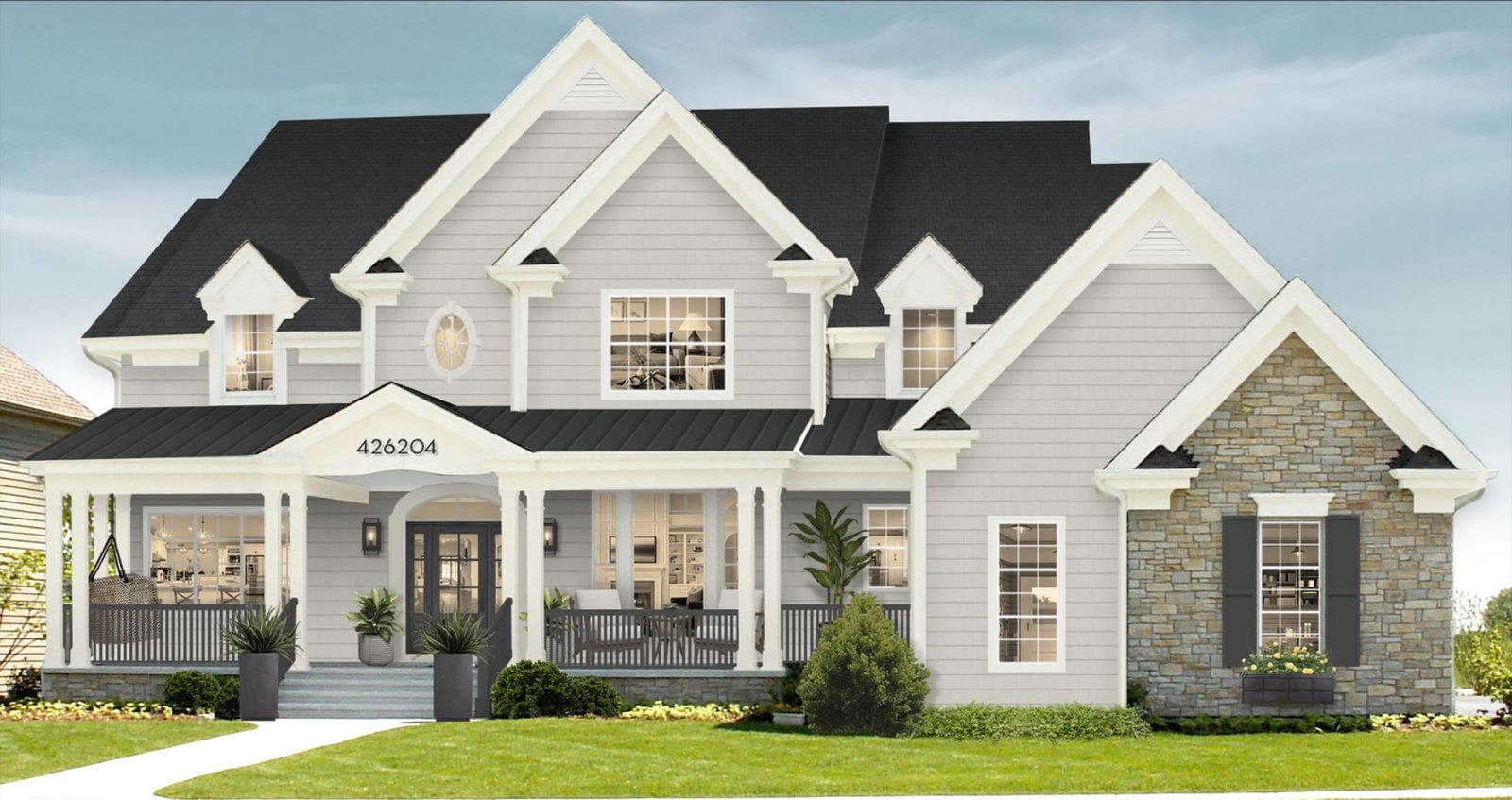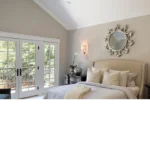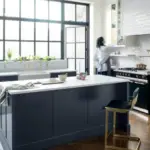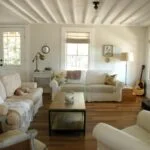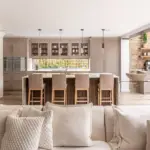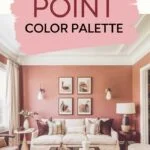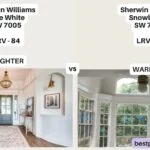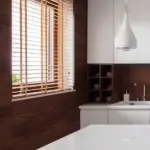Introduction
In the domain of interior design, the realm of paint color presents an expansive spectrum of possibilities, each possessing a unique ability to transform spaces with subtlety or dominance. Among this vast array, gray emerges as an enduring classic, celebrated for its neutrality and unparalleled versatility. Within this family, Benjamin Moore’s Gray Huskie stands as a testament to muted elegance — a nuanced gray that dances gracefully between warm and cool undertones. It’s not just a color but an experience, a middle ground that fosters balance and sophistication in any environment.
Overview of Benjamin Moore Gray Huskie
Gray Huskie is more than just a mid-tone gray; it is an ambassador of serenity and subtlety in the world of decor. With its chameleon-like qualities, this shade can complement a diverse array of design aesthetics, from rustic to modern, traditional to contemporary. Its adaptability makes it a favored choice for a multitude of spaces, proving itself as an undeniable asset in any decorator’s palette.
Key Characteristics of Gray Huskie
Color Family
Embedded in the gray family, Gray Huskie wears the badge of versatility and neutrality with pride. Unlike more vivid hues, it serves as a backdrop that allows other elements of a room to shine, imparting an air of understated elegance. A choice color for those who desire a classic feel that does not demote personality.
Light Reflectance Value (LRV)
With an LRV of 46, Gray Huskie is characterized as a mid-tone gray. This vital statistic is instrumental in determining the paint’s depth. It masterfully maintains a delicate balance, offering enough presence to make a room feel anchored without overwhelming it in darkness. It is an invitation to experience the richness of gray without the gloominess.
RGB Values
The RGB profile of Gray Huskie — a blend of red, green, and blue — delivers a dynamic look that transforms under different lighting conditions. This alchemy allows Gray Huskie to reflect personality and ambiance, making it an indispensable tool for designers aiming to create space filled with depth and character.

Pro Grade Paint Roller Kit, Brush & Roller for Professionals & Homeowners
Perfect for smooth finishes on your interior walls. Ideal for home improvement enthusiasts!
Buy Now on AmazonUndertones and Lighting Impact
Undertones
The subtle dance of undertones is where Gray Huskie truly shines. It harbors gentle whisperings of blue and brown, with the ability to shine in both warm and cool lighting environments. This complexity invites exploration and experimentation, as it works harmoniously with a variety of design elements and room orientations.
Effect of Lighting
Lighting, both natural and artificial, plays an influential role in defining Gray Huskie. In rooms with southern exposure, the warmth of this gray is accentuated, creating a cozy and inviting atmosphere. Conversely, when gracing a north-facing room, it leans toward cooler, more neutral tones, bestowing a tranquil and crisp scene.
Ideal Uses for Gray Huskie
Best Rooms
Gray Huskie is a versatile champion in the arena of interior spaces. It harmonizes splendidly in living rooms, offering a cohesive backdrop for relaxation and entertainment. In bedrooms, it provides a soothing sanctuary conducive to restful sleep, while in kitchens and bathrooms, it supports a clean and refreshing ambiance. The adaptability extends to interior doors, cabinetry, and even exteriors – making it a well-rounded choice.
Whole House Paint Option
For those who yearn for consistency and cohesion throughout their home, Gray Huskie stands as an impeccable selection. Its neutrality permits it to flow seamlessly from room to room, creating a unified appearance that sustains a narrative of sophistication and harmony from the foyer to the furthest corner of the house.
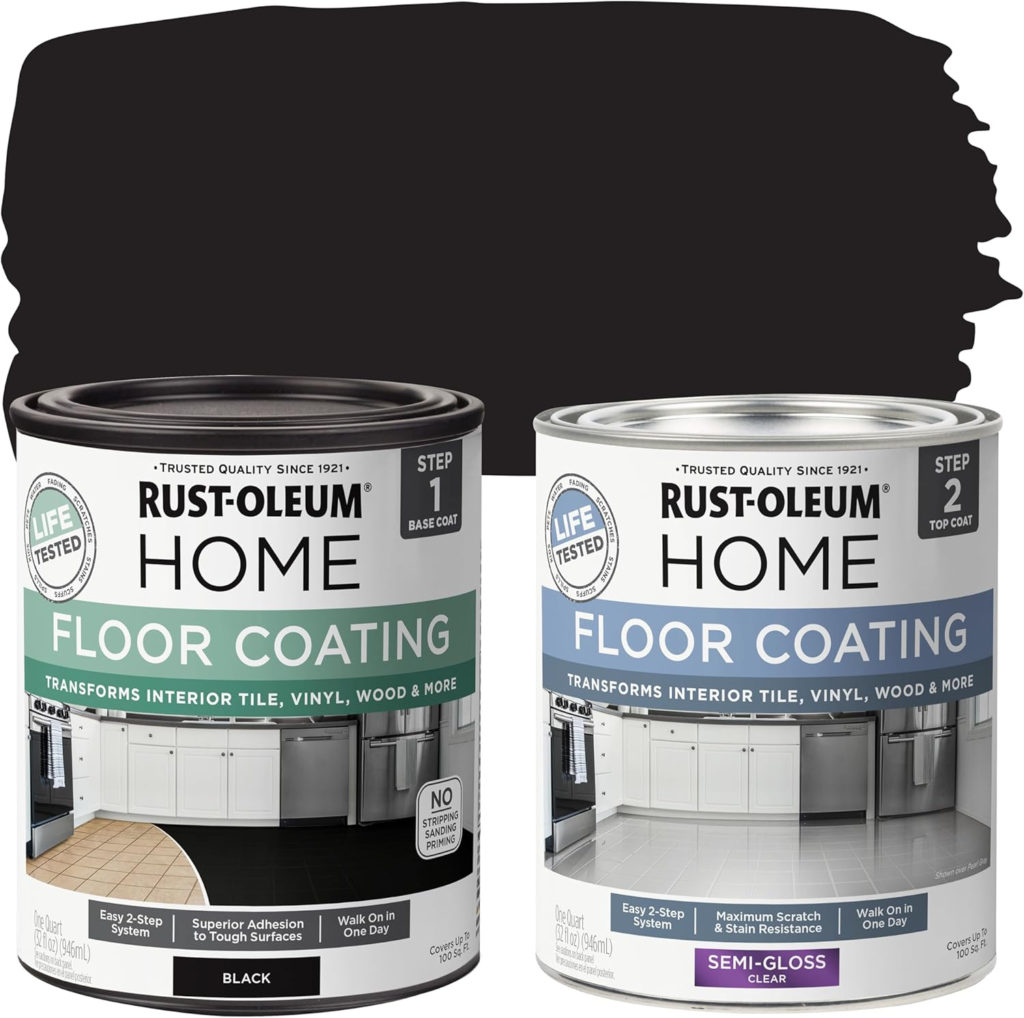
Rust-Oleum 367605 Home Interior Floor Coating Kit, Semi-Gloss Black
Ideal for updating outdated flooring at a fraction of the cost of replacement and adheres without stripping, sanding or priming.
Buy Now on AmazonSimilar Colors
A journey through the spectrum of gray reveals many similar hues, each with its unique twists. Benjamin Moore’s La Paloma Gray is one such companion, offering a cooler tone with similar depth, making it a viable counterpart for those seeking a more muted feel. Behr Greige presents a slightly warmer alternative, tilting ever-so-slightly towards beige, while Sherwin-Williams’ Mindful Gray and Benjamin Moore’s Stonington Gray invite comparison with their distinctive undertone marriage.
Coordinating Colors
Medium Blues
Gray Huskie finds perfect harmony with medium blues like Old Blue Jeans and Blue Dragon. These complementing shades enhance the gentle coolness of Gray Huskie, creating a serene environment reminiscent of open skies and calm oceans.
Deep Browns
Delve into deeper browns such as Vintage Wine and Mississippi Mud to instill an aura of warmth and richness. This combination amplifies the subtle brown undertones in Gray Huskie, fostering an enveloping coziness that beckons relaxation.
Light Cool Grays
A partnership with light cool grays like Oystershell and Gray Cashmere invites an ensemble of subtle sophistication. These hues cultivate an airy and ethereal atmosphere, allowing each shade to echo delicately across the space.
Recommended Trim Colors
Soft Whites
Pairing Gray Huskie with soft whites such as Sherwin Williams Alabaster, Benjamin Moore White Dove, or Behr Cameo White forms a crisp and clean contrast. The juxtaposition accentuates Gray Huskie’s elegance, defining spaces with clarity and a touch of grace.
FAQs on Gray Huskie
Undertones
The undertones of Gray Huskie — a delicate blend of blue and brown — shape its character, influencing every application. These undertones allow it to mold itself to its surroundings, adapting between warmth and coolness depending on light and accompaniment.
Comparison with Similar Grays
When dissecting the differences between Gray Huskie and its similar counterparts, one notices its distinctive balance of warmth and coolness, setting it apart from La Paloma Gray’s cooler demeanor, Behr Greige’s warm tilt, and Stonington Gray’s cooler essence.
Exterior Use
Gray Huskie’s suitability as an exterior paint option cannot be overstated. Its mid-tone depth and neutral undertones provide a sophisticated, cohesive canvas upon which nature’s various lighting effects can play, offering a chameleon-like changeability that enhances curb appeal across environments.
Conclusion
Gray Huskie by Benjamin Moore is a master in the art of subtle balance, offering decor versatility and a palette for innovation through its harmonious blend of warm and cool tones. It champions both individuality and cohesion, making it an intuitive choice for designers seeking universal appeal. However, the importance of sampling should not be underestimated; observing Gray Huskie in the unique light and setting of each space allows its true potential to reveal itself. In the world of interior design, Gray Huskie stands both as a steadfast neutral and an avenue for creative exploration, proving itself timeless in its elegance.

